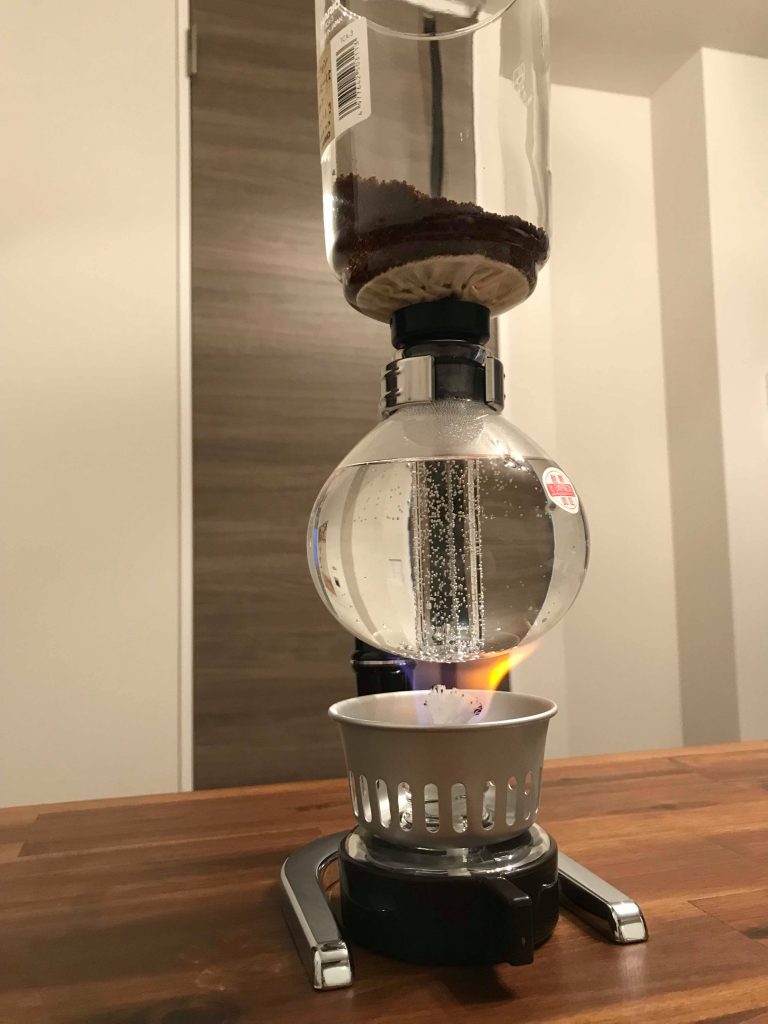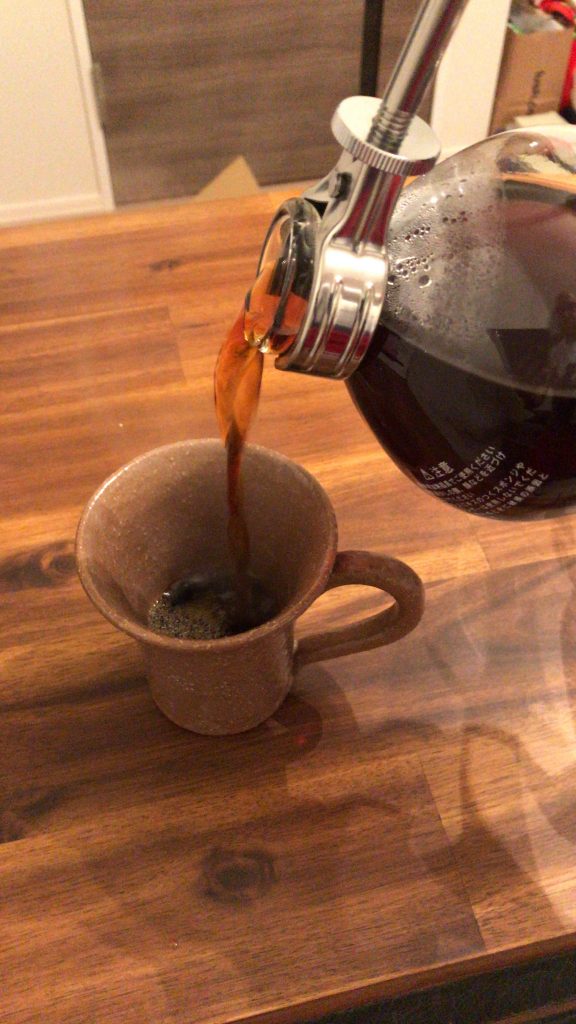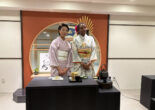
Syphon Coffee, another proof of Japanese excellency
Since coming back to Japan, I have been learning more and more about coffee. Whether discovering new places, meeting people who share this passion (and learning that there are so many of them out there!) or trying new methods for brewing. This time, I am going to focus on that last point.
If you have checked my first article, I have mentioned an old man in his café in Kyoto that was patiently preparing our coffees, taking his time and making sure that everything was made to perfection.
As mentioned before, I was not familiar with a lot of brewing techniques that are pretty common here in Japan but even though since then I became more used to see – and use – some of them, the specific tool and technique that he was using have still been unknown to me for quite some time, all I knew until recently was the name of the tool: a syphon (or vacuum).
The first time I had a closer look at a syphon was in a café in Chigasaki, where all their coffees were prepared with it, so I found it pretty interesting to see it coming to my table in the bottom glass part of the syphon, waiting to be poured.

My first impression while seeing the shape of it was: it reminds me of my chemistry classes back in high school. Not exactly what you would usually think when getting ready to enjoy some of your favorite drinks, right? But that was it for the silly thoughts, as I started looking a bit closer into how the coffee was. The drink seemed to be clear and smooth pretty similar to handrip one, so I couldn’t really understand at first what could be the difference making it worth going through all that trouble to prepare it. Then I noticed something that is usually missing when using pour over methods: it seemed that the natural coffee bean oils where actually present within the drink. Then came the tasting: it was simply good, but I wasn’t sure whether it was the brewing method, the beans or the roasting that made it that way as I did not have that type of coffee before.
So, I thought: what if I could simply prepare it at home? After all, I never really had a look into the syphon brewing methods before, but as my home was seeing new tools coming every month, then a syphon could definitely be the next.
I came home and started doing a bit more research about it, discovering coffee aficionados really did love syphon for brewing. It seemed that the purest type of coffee could be prepared with it, getting all the beans potential out and preparing a smooth and pure drink. And obviously, Japan made it a thing.
Looking for the best types, Hario still came on top of anyone else, offering various models and sizes. But which one would be the best for me at home? I went to a few kissaten ( traditional Japanese style coffee house) -including one my personal favorites in Kanagawa – and asked why they believed the syphon was the ideal tool for brewing their coffee and everyone was adamant regarding its capability of bringing out exactly the type of drink they wanted to make. But that was not enough, I needed to look further and finally had the opportunity to get in touch with the owner and manager of a café that specializes in…brewing with syphons.
Thanks to that encounter and having the chance to discuss about it, I learnt that most kissaten tend to use a medium to dark roast for their coffees, which as far as I have tried seemed to be the case. The syphon was then able to bring the various tastes the roasting made, from a smoaky feeling to a light aftertaste of coal, we are actually able to understand the roasting and preparation method that has been made, all according to the person in charge’s feelings. The discussion ended with a simple decision, which model would fit me the best.
A few weeks later, my syphon made it to its new home, next to all the other tools already present, that felt like a very special addition as I was stepping into something I never really tried before.
I decided to give a god to the same beans with a pour over method and the syphon, roasted and ground the same way.
Starting with the pour over, a smooth and clear coffee came out, something I have been enjoying more and more lately. Then I tried the syphon and went through the whole process for the first time. The exact same beans that I have used right before for pour over coffee felt different, with a full-bodied taste in my mouth that left a stronger aftertaste.

From start to finish, including the cleaning of the tools, this process takes me quite some time compared to any other that I am used to, once again showing me the patience of Japanese people in the preparation and the importance of being precise. Every milliliter of water and every gram of coffee count towards the final balance, as well as the time the water is left brewing, the strength of the flame and for how long it is used. I have failed at bringing out the taste that I was expecting from specific beans more than once, every time due to a slight difference in preparation. After a few months preparing coffee with a syphon routinely, I feel like I am slowly getting used to it but I am also aware that I am not close to mastering this tool the way I would want, once again making it very exciting.
That has been one of my most recent coffee experiences here in Japan and it has been making an idea row slowly in my head, that I would really love to see the Hario factory, which is the only one in Japan making the heat resistant glass that is used for all the amazing brewing tools that I have come to love.
I wonder where this coffee learning in Japan will bring me next – and I can’t wait!
Thank you for reading this week’s blog!
If you are having trouble finding a place in Tokyo, please feel free to contact us and have a look at our properties at tokyoroomfinder.com. We will connect you with your desired house at no cost!
Written by Christophe-Audisio , follow him on his blog http://thecoffeemaker.coffee/
Related Articles
Warning: Undefined array key "sfsi_threadsIcon_order" in /home/veremosglobal/tokyoroomfinder.com/public_html/blog/wp-content/plugins/ultimate-social-media-icons/libs/controllers/sfsi_frontpopUp.php on line 165
Warning: Undefined array key "sfsi_blueskyIcon_order" in /home/veremosglobal/tokyoroomfinder.com/public_html/blog/wp-content/plugins/ultimate-social-media-icons/libs/controllers/sfsi_frontpopUp.php on line 170
Warning: Undefined array key "sfsi_bluesky_display" in /home/veremosglobal/tokyoroomfinder.com/public_html/blog/wp-content/plugins/ultimate-social-media-icons/libs/controllers/sfsi_frontpopUp.php on line 266



